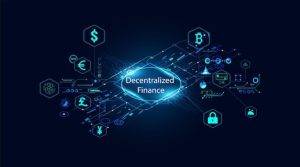Coin Burning and its Relation to Blockchain Governance

Coin Burning and its Relation to Blockchain Governance
Blockchain technology has revolutionized various industries, offering decentralized solutions and immutable records. One intriguing aspect of blockchain governance is the concept of “coin burning.” This article explores the intricacies of coin burning, its significance in blockchain governance, its relation to different consensus mechanisms, examples in prominent blockchain projects, implications on tokenomics, challenges and considerations, market impact, and more.
What is Coin Burning?
Coin burning refers to the deliberate and permanent removal of cryptocurrency tokens from circulation. This process involves sending tokens to an address with an unobtainable private key, rendering them inaccessible and effectively reducing the total supply. Coin burning can be initiated by the project developers or by token holders themselves, depending on the mechanism employed.
Purpose
The primary purpose of coin burning is to bring about specific outcomes within a blockchain ecosystem. These outcomes can include increasing scarcity and value, addressing inflation, controlling token supply, or providing incentives to token holders. By reducing the supply, coin burning has the potential to influence the token’s price and market dynamics.
Methods of Coin Burning
There are several methods through which coin burning can be executed. The most common methods include:
- Proof of Burn: This method requires users to send tokens to an unspendable address, ensuring they are permanently removed from circulation.
- Transaction Fees: Coin burning can occur when tokens are used as transaction fees. Instead of distributing these fees to miners or validators, they are destroyed.
- Buybacks and Burns: Projects may use their profits or reserves to repurchase and subsequently burn tokens from the market.
- Token Lockups: Tokens can be locked up for a specified period, rendering them temporarily unavailable.
The Significance of Coin Burning in Blockchain Governance
Coin burning plays a vital role in the governance and overall dynamics of blockchain projects. Some of the key aspects where coin burning holds significance are:
Reducing Coin Supply
By permanently removing tokens from circulation, coin burning reduces the total supply. This decrease in supply, coupled with a consistent or growing demand, can potentially increase the token’s value over time. It helps in maintaining a balance between supply and demand, allowing for better tokenomics.
Increasing Scarcity and Value
Coin burning can increase the scarcity of a token, creating a sense of rarity among investors. As the supply diminishes, the token’s value may appreciate due to the limited availability. This can incentivize early adopters and long-term holders, contributing to a more sustainable ecosystem.
Addressing Inflation
Inflation can be a concern in some blockchain projects where new tokens are continuously minted. Coin burning provides a mechanism to counterbalance this inflationary pressure by reducing the overall token supply. This helps in maintaining price stability and preventing excessive dilution.
Coin Burning and Consensus Mechanisms
Different consensus mechanisms employed by blockchain networks have varying implications for coin burning. Let’s explore how coin burning relates to some popular consensus mechanisms:
Proof of Work (PoW)
In Proof of Work-based blockchains like Bitcoin, coin burning is not an inherent feature. However, the energy-intensive mining process indirectly contributes to the reduction of coins in circulation. Miners incur costs in the form of electricity and hardware expenses, which can be considered a form of investment and burning.
Proof of Stake (PoS)
Proof of Stake blockchains, such as Cardano, utilize coin ownership and staking as a means to secure the network. Coin burning can be implemented to ensure a fair distribution of rewards, encourage long-term commitment, and reduce the circulating supply.
Delegated Proof of Stake (DPoS)
In DPoS blockchains like EOS, coin burning is not a built-in mechanism. However, token holders can vote for block producers using their stake, indirectly influencing the network’s governance. Projects built on DPoS may choose to implement coin burning to enhance token value or align incentives among stakeholders.
Other Consensus Mechanisms
Different consensus mechanisms, such as Proof of Authority (PoA), Practical Byzantine Fault Tolerance (PBFT), and Directed Acyclic Graphs (DAGs), may have unique mechanisms related to coin burning. It depends on the specific design and goals of each blockchain project.
Examples of Coin Burning in Blockchain Projects
Several prominent blockchain projects have incorporated coin burning into their tokenomics to achieve various goals. Here are a few notable examples:
Binance Coin (BNB)
Binance Coin, the native cryptocurrency of the Binance exchange, regularly conducts token burns. Binance uses 20% of its quarterly profits to buy back and burn BNB tokens. This mechanism helps to control the supply of BNB, increasing its scarcity and potentially boosting its value.
Ripple (XRP)
Ripple, the blockchain-based payment protocol, holds a significant amount of XRP tokens. Ripple periodically sells a portion of its XRP holdings and allocates some of the proceeds for operational expenses. The unsold XRP is then returned to an escrow account, effectively removing it from circulation.
Ethereum (ETH)
Ethereum, the second-largest cryptocurrency by market capitalization, has plans to transition from Proof of Work to Proof of Stake through Ethereum 2.0. This transition will involve the burning of ETH through a deposit contract, reducing the supply and increasing the security and energy efficiency of the network.

Coin Burning and Tokenomics
Coin burning has a profound impact on the tokenomics of a blockchain project. It affects the overall economic model and can influence factors like token utility, value, and investor sentiment.
Token Utility and Burn Mechanics
Coin burning can be linked to token utility within a blockchain ecosystem. Projects may design mechanisms where burning tokens provide access to certain features, services, or benefits. This enhances the value proposition of the token and encourages token holders to participate actively.
Economic Implications
Coin burning alters the supply and demand dynamics of a token. When the supply decreases and demand remains stable or increases, the token’s value may rise. This can incentivize token holders and attract new investors. However, careful consideration is necessary to strike a balance between burning and maintaining sufficient liquidity.
Challenges and Considerations in Coin Burning
While coin burning offers potential benefits, there are several challenges and considerations that need to be addressed:
Regulatory Concerns
The regulatory landscape surrounding cryptocurrencies and blockchain governance is still evolving. Coin burning activities may face scrutiny or restrictions from regulatory authorities. Blockchain projects must navigate these legal and compliance challenges to ensure a smooth implementation of coin burning mechanisms.
Transparency and Accountability
Transparency is crucial in blockchain governance, especially when it comes to coin burning. Projects should provide clear and auditable records of the burned tokens, ensuring accountability to their community and investors. Transparent communication about the purpose and methods of coin burning is essential for building trust.
Community Sentiment
Coin burning can have a significant impact on community sentiment and investor perception. Projects need to consider the opinions and preferences of their community when implementing coin burning mechanisms. Engaging in open dialogue and seeking community feedback can help foster a sense of inclusivity and shared decision-making.
Coin Burning and Market Impact
Coin burning can have both short-term and long-term effects on the market and investor sentiment:
Price Movements
Coin burning announcements or events often trigger market reactions. Depending on market conditions and investor expectations, the token’s price can experience volatility. If the burning activity is seen as positive and contributes to token scarcity, it may lead to upward price movements.
Investor Sentiment
Coin burning can positively influence investor sentiment by signaling a project’s commitment to token value and long-term sustainability. Token holders may view burning activities as a demonstration of confidence from the project team, potentially attracting more investors.
Long-Term Effects
The long-term effects of coin burning are multifaceted. A carefully executed coin burning strategy can contribute to a healthier token ecosystem, increased token value, and enhanced market stability. However, projects must balance their burning activities to avoid unintended consequences, such as excessive scarcity or reduced liquidity.
Conclusion
Coin burning plays a crucial role in blockchain governance, allowing projects to control token supply, increase scarcity and value, address inflation, and shape tokenomics. It is a mechanism that aligns economic incentives, rewards long-term commitment, and influences market dynamics. However, coin burning should be implemented with careful consideration of regulatory requirements, community sentiment, and transparency. By understanding the implications and challenges associated with coin burning, blockchain projects can navigate the complexities of governance and contribute to the growth of decentralized ecosystems.
FAQs
1. What is the purpose of coin burning in blockchain projects? Coin burning serves various purposes, including reducing coin supply, increasing scarcity and value, addressing inflation, and providing incentives to token holders.
2. How does coin burning relate to blockchain governance? Coin burning is a governance mechanism that impacts tokenomics, market dynamics, and investor sentiment within a blockchain ecosystem.
3. Which consensus mechanisms employ coin burning? Consensus mechanisms like Proof of Stake (PoS) and Delegated Proof of Stake (DPoS) can incorporate coin burning to achieve specific goals.
4. Can you provide examples of coin burning in blockchain projects? Projects like Binance Coin (BNB), Ripple (XRP), and Ethereum (ETH) have implemented coin burning mechanisms to influence token supply and value.
5. What are the challenges in coin burning? Regulatory concerns, transparency, and community sentiment are some challenges that need to be considered when implementing coin burning.

I’m known as one of the best crypto authors because I take time to understand the technology and write in a way that is easy for others to understand. I can simplify complex concepts and my writing style is engaging. My articles have been featured on some of the top crypto sites and I’mregularly sought out by readers for my insights on the latest news. I’m also a speaker and have discussed crypto at various conferences. If you’re looking for someone who can help you make sense of the ever-changing world of cryptocurrency, then you can get in touch with me.



